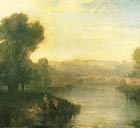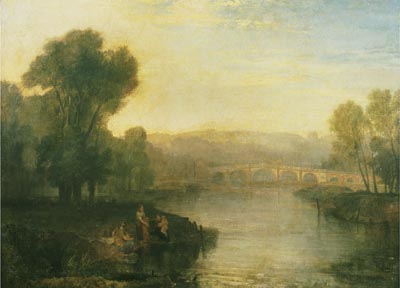Exhibition review: English landscape sketches
This is a welcome opportunity to see a selection of English landscape sketches not normally on public display


On the last leg of its 11-month tour, this breezily enchanting show comes from Compton Verney and Margate to the Laing Art Gallery in Newcastle, where it will remain from March 1 until June 29. The misleading full title, ‘Turner and Constable: Sketching from Nature, Works from the Tate Collection', conveys both less and more than it actually contains. Less, because, of the 59 works from about 1770 to 1830 on display, only nine are by Constable and eight by Turner; more, because the others, including five each by Thomas Jones and George Robert Lewis, are well worth a little trumpet-blowing.
It is strange that there is no fully acceptable English term for plein air painting. The direct translation, ‘open-air' painting, is awkward, as would be ‘outdoor'. Yet, from the mid 18th century, British artists took to the practice of sketching directly from nature in oil paint or water-colour with great enthusiasm. They learned from Continental colleagues in Rome, who had been inspired in their turn by the practice of earlier French masters, notably Claude and Alexandre-François Desportes.
The greatest enthusiasts among the Grand Tour artists in Rome were the French landscapist Claude-Joseph Vernet and the Germans Georg and Jacob Philipp Hackert. Of the latter-not mentioned in the catalogue essays for this show-Goethe wrote that, in 1770: ‘The French pensionnaires were all amazed when they saw the two Hackerts roaming the countryside with large portfolios, executing finished outline drawings in pen and ink or, indeed, highly finished water-colours, and even paintings, entirely from nature.'

Alexander Cozens and, later, his son John Robert, Richard Wilson and his pupil Thomas Jones, George Stubbs and many more were directly influenced by Vernet and Hackert and, on their return, their experience added power and ambition to the existing native strand of topographical, antiquarian and picturesque view taking in watercolour.
As the originators and curators of the show point out, plein air painting was physically difficult, even though special boxes, doubling as supports, were developed for it. For the most part, the products were small-scale sketches and, as speed of execution was often of the essence, style and technique in oil may be closer to watercolour sketches than to the finished exhibition pictures that might be based on them.
The show opens with a figureless Stubbs of a rubbing-down house at Newmarket, which is so immediate that one can smell the clay and chalk. Then, Jones astonishes, as ever, Constable is supremely assured and Turner points towards the future. An admirable aspect is that, despite the title, the two last do not tower over their contemporaries. Artists who are not now regarded as their equals, but were then, such as George Garrard, William Alfred Delamotte, Peter De Wint and William Henry Hunt-not to mention John Crome and John Sell Cotman-show just how strong they could be in this form.
There are, too, some lesser-known names, such as John Burnet, well worth the finding. Given an end date of about 1830, it is a pity that one or two of Landseer's early oil sketches have not been included.
Exquisite houses, the beauty of Nature, and how to get the most from your life, straight to your inbox.
‘Turner and Constable: Sketching from Nature, Works from the Tate Collection' is at the Laing Art Gallery, New Bridge Street, Newcastle, from March 1 until June 29 (0191-232 7734; www. twmuseums.org.uk/laing-art-gallery.html)
Country Life is unlike any other magazine: the only glossy weekly on the newsstand and the only magazine that has been guest-edited by His Majesty The King not once, but twice. It is a celebration of modern rural life and all its diverse joys and pleasures — that was first published in Queen Victoria's Diamond Jubilee year. Our eclectic mixture of witty and informative content — from the most up-to-date property news and commentary and a coveted glimpse inside some of the UK's best houses and gardens, to gardening, the arts and interior design, written by experts in their field — still cannot be found in print or online, anywhere else.
-
 ‘I’m not impressed by an Oxbridge education’: Author Jessie Burton on her acting ambitions, writing ‘The Miniaturist’ and her consuming passions
‘I’m not impressed by an Oxbridge education’: Author Jessie Burton on her acting ambitions, writing ‘The Miniaturist’ and her consuming passionsThe Sunday and New York Times bestselling author wrote her debut novel under her desk while temping as a PA for private equity companies. Lotte Brundle meets her.
-
 You can now rent King William IV’s former home in London’s Mayfair — for a princely sum
You can now rent King William IV’s former home in London’s Mayfair — for a princely sumThe London property — with royal lineage — is on the market with the estate agency Wetherell for £25,000 a week.
